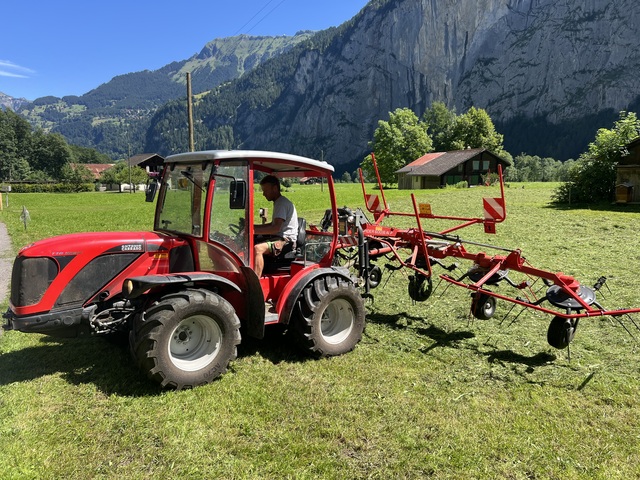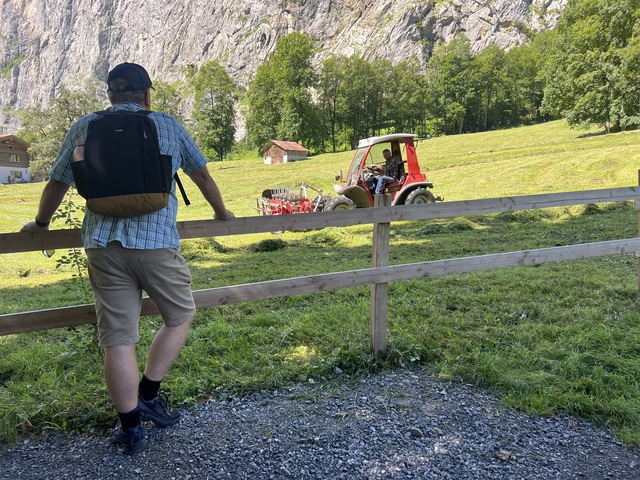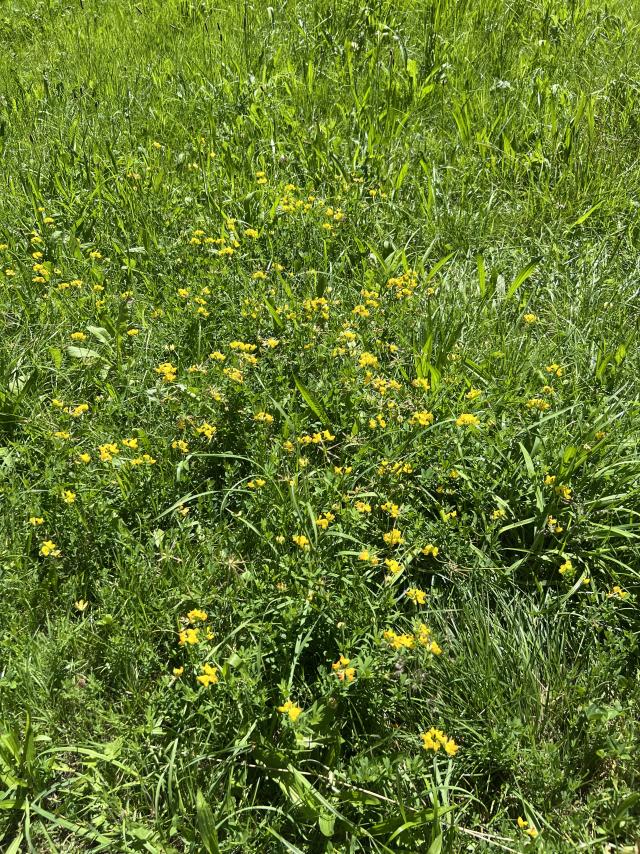I was walking through the steep-sided Lauterbrunnen Valley in Switzerland, a place better known for waterfalls and tourists than farming, when I came across a farmer working a hillside paddock.
He was tedding meadow hay, turning it over to help it dry before baling it into round silage rolls. His English was broken, and my Swiss German is non-existent, but with some pointing, guesswork, and shared understanding, we managed a good chat.
It was his third cut for the season. With about two metres of annual rainfall, the grass grows fast and thick.
He manages about 25 hectares and runs 20 dairy cows, grazing further up the valley. The paddocks are often steep, carved out between mountain slopes, and in many places, machinery simply cannot go.
About 500 metres before I met him, I had passed another farmer using a small self-propelled side-delivery rake to row up hay. Up near the treeline, a man, probably his father, was cutting grass with a scythe.
Nearby, someone else was walking along the slope with what looked like a leaf blower. What exactly he was doing was not entirely clear, but I guessed he was blowing missed bits of hay back into the rows.
The farmer showed me the hand rake he uses on the steepest country, a solid piece of gear with a wooden handle, steel teeth, and a working width just over a metre.
He still rakes those difficult areas by hand, the same way it’s been done for generations. “We do like this for 100 years,” he said with a grin.
Once the hay dries out enough, it is baled into round silage rolls and wrapped for winter. You see them all over, in Australia, in Europe, a sign that someone’s getting feed ready.
Looking out over the paddock, he pointed to the edge of the forest and said, “If we don’t cut, the trees take over.”
That one line said a lot. Here, farming isn’t just about keeping cattle fed.
It is also about keeping the land open. Without regular cutting and grazing, these meadows would vanish back into forest within a few seasons.
That is a reality we do not always face on flatter ground. This kind of farming does not make headlines, but it is full of grit.
It is not about scale or technology, it is about knowing the land, using the tools that work, and staying on top of it season after season.
So next time you pass a paddock full of round silage rolls, take a second look. Whether they are on flat country or perched on a slope, they mark more than feed.
They are a sign someone’s still working the land, one cut, one rake, one roll at a time.








